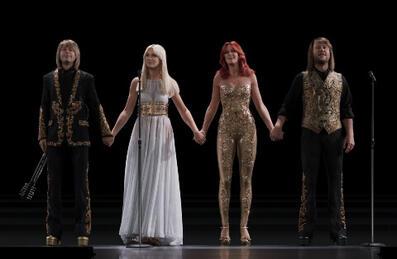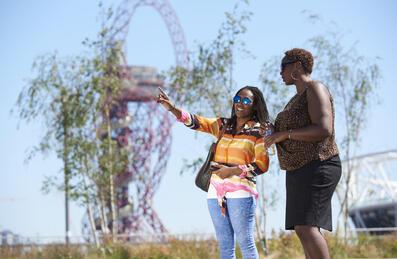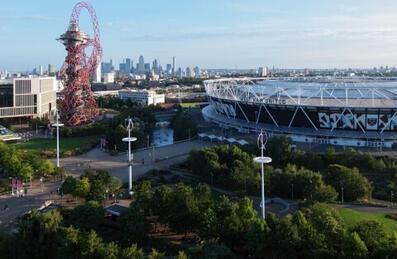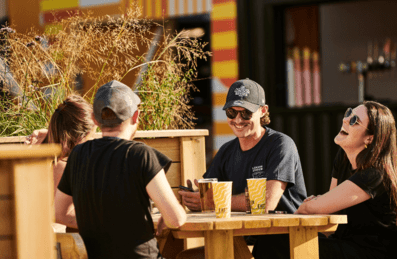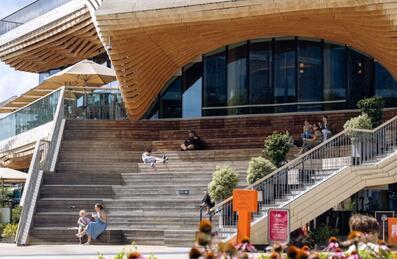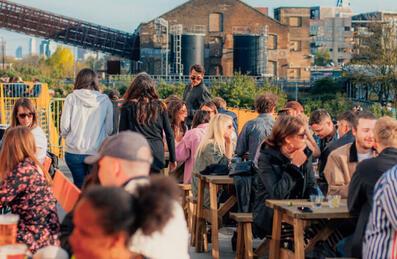
Popular Searches:
Keep up to date
Sign up today for exclusive offers and incredible experiences you won’t want to miss at Queen Elizabeth Olympic Park.
Sign up nowQueen Elizabeth Olympic Park's L.O.N.D.O.N Campaign
Welcome to Queen Elizabeth Olympic Park – and to the L.O.N.D.O.N campaign, which is highlighting various aspects of the legacy left by the 2012 Olympic and Paralympic Games and built on by the London Legacy Development Corporation (LLDC). We hope from what you read on this page you gain an insight into the incredible transformation that has happened in this part of East London since 2012.
L - LEGACY
Legacy was at the heart of London’s bid for the 2012 Olympic and Paralympic Games and it continues to play a central role in delivering one of the UK’s most successful regeneration projects.
In fact, the 2012 legacy is widely regarded as the greatest seen in modern times. There is a reason why the International Olympic Committee view what has happened here as a blueprint for other future host cities to follow.
Sir Hugh Robertson, Chair of the British Olympic Association, highlights the Games' impact: "A fantastic example of how sport can regenerate an area and benefit people's lives. It’s been utterly transformational."
The 2012 Games have driven billions in additional investment for new homes, transport links, business districts, and entertainment, with major events contributing significantly to local spending and businesses thriving in the revitalised area.
You can read more about how LLDC’s story started here.
O - OPPORTUNITY
At the heart of any regeneration project there has to be a clear idea of how the work overall will benefit the people it will serve. In our case those people are east Londoners from the boroughs of Hackney, Newham, Tower Hamlets and Waltham Forest.
Through initiatives such as the Good Growth Hub. Build East and SHIFT, as well as developing strong relationships with local communities, LLDC has made significant progress in delivering much needed jobs and skills.
The Good Growth Hub (creative skills and training hub which opened in 2021) and Build East (a centre of excellence for construction and built environment skills training which opened in 2021) are flagship facilities delivering a more inclusive economy. Nearly 1,500 people have accessed careers information and guidance since the Good Growth Hub opened while over 2,200 residents have received training at Build East.
You can learn more about the opportunities London 2012 has created by reading this blog by LLDC Director of Inclusive Economy, Michelle May.
N - NEIGHBOURHOODS
2012 was never just about a summer of sport, no matter how spectacular or thrilling those weeks in July, August and September were. A key chapter of the story that came after the sport was housebuilding and the development of neighbourhoods on the Park.
In the last 12 years significant strides forward have been taken in delivering high-quality and award-winning homes. On LLDC-owned land, up to 5,855 homes are to be delivered once all schemes are complete (by 2032) – almost 1,200 homes have been completed so far. By 2036, LLDC will have supported the delivery of 33,000 homes in the wider planning area.
Of those on LLDC-owned land, it is expected that a minimum of 40% will be affordable housing and 64% will be family-sized homes (2Bed+). Work does not stop at just delivering homes either.
In 2021, LLDC undertook a pilot Post Occupancy Evaluation (POE) study at Chobham Manor, the first neighbourhood on the Park, to get a better understanding of how people use their homes. Important work that shapes future neighbourhood plans, such as those at Stratford Waterfront which in June 2024 received detailed planning consent.
D - DEVELOPMENT
Of course, development is not limited housebuilding and the Park’s story is more than just building excellent places to live. To create high-quality, sustainable and inclusive neighbourhoods we have worked hard, in partnership with the boroughs, to deliver the supporting infrastructure – whether that be new schools, community facilities or physical connections; stitching newer developments into the existing fabric of the area.
A major piece of development is East Bank. Hailed by Mayor of London, Sadiq Khan, as ‘a new culture and education powerhouse for our capital’, East Bank is forecast to generate 2,500 jobs, attract an additional 1.5 million visitors a year and boost the economy to the tune of £1.5 billion.
With UCL East and UAL’s London College of Fashion already open, East Bank has further enhanced and developed the strengths of the area and offers a gamechanger for innovation, creativity and learning, with the V&A East Museum and Storehouse, Sadler’s Wells East and BBC Music Studios set to arrive from this year. World-renowned organisations embedded right here at the heart of the Park in Stratford and accessible to the communities we strive to reach. You can read more about East Bank here.
O - OPEN
‘Thanks for the warm up…’ Anyone remember that slogan from 2012? It was used to promote the Paralympic Games and was tongue-in-cheek remark to the Olympic Games that had concluded two weeks earlier and what was to come next. It set the tone for what was the most attended Paralympic Games in history.
Organisers set new design standards to ensure the most accessible Games ever. It was no coincidence, then, that the 2012 Paralympics helped to change attitudes towards, and LLDC continues to build on a legacy that has accessibility at its core.
Inclusive design is at the forefront of what we do when it comes to infrastructure and what is built: lifetime homes, excellent access to public transport, dropped kerbs, lips in the steps at East Bank so that wheelchair users can get as close to the front as safely possible – seemingly small changes that have big impact on the lives of many people.
One of the most impactful elements of the Paralympic legacy has been the creation of the GDI Hub, which was launched by the Mayor of London in 2016 to drive innovation and solutions in assistive technologies. More information about the GDI Hub can be found here.
LLDC’s work in the field of women and girls safety has proved instrumental in the creation of a safety charter to promote and protect the safety of women and girls on Park and in the wider LLDC area. You can read more about the women and girls safety workstream here.
N - NATURE
The Park has a proud sustainability story. The 2012 Games were billed as (and delivered) the “greenest games”.
With 102 hectares of Parkland, this is the largest urban Park created in over 150 years and has been awarded the coveted Green Flag Award for 10 consecutive years – a testament to all those who work hard to maintain the Park to the highest possible standards.
Of those 102 hectares, 49.1 is permanent Biodiversity Action Plan (BAP) habitat connected to the wider London green infrastructure network, which contributes to the maintenance of a valuable, wildlife rich ecosystem.
An ecosystem which boasts six “schedule one” birds – schedule one means among the rarest in the UK, with species such as kingfisher, black redstart, Cetti’s warbler, fieldfare, redwing and peregrine falcon among those which visit here.
LLDC has delivered the vision to reuse the Olympic venues and has spent more than a decade delivering Legacy sustainability objectives. Each year over 97% of waste is diverted from landfill from LLDC construction sites and Park operations as LLDC works towards achieving 100% diversion of waste from landfill.
Our new Climate Action Strategy, which was published in June 2024 and can be viewed here, provides a framework for climate action against all of LLDC’s current and future activities.
More ways to stay up to date
If you are interested in bringing your business to the Park or are interested in hearing what we could offer your business, you can sign up to our B2B communications.
Subscribe today
